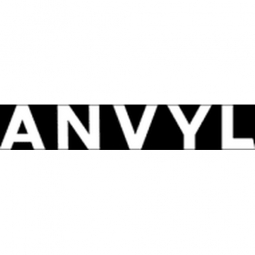Download PDF
hims Leveraged Anvyl to Bring High-Quality Products to Market Faster
Technology Category
- Functional Applications - Enterprise Resource Planning Systems (ERP)
- Functional Applications - Product Lifecycle Management Systems (PLM)
Applicable Industries
- Consumer Goods
- Retail
Applicable Functions
- Product Research & Development
- Procurement
Use Cases
- Supply Chain Visibility
- Inventory Management
Services
- System Integration
- Software Design & Engineering Services
The Challenge
As the pace of product innovation increases, startups face intense pressure to get products to market faster. hims, an early-stage, high-growth men’s personal care brand, sought to reduce its time to market for several new products in order to capture market share in an increasingly crowded category. hims tasked Anvyl with helping it rapidly develop a new supply chain for a variety of products. In the direct-to-consumer business, getting your products out to market quickly is critical to success,” said Hilary Coles Head of Product for hims. “We were excited to work with Anvyl because its team of experts could serve as an extension of our own – providing eyes on the ground at every stage of the sourcing and production process.
About The Customer
hims is an early-stage, high-growth men’s personal care brand that focuses on providing high-quality products directly to consumers. The company operates in a highly competitive market where rapid product innovation and quick time-to-market are crucial for capturing market share. As a direct-to-consumer business, hims emphasizes the importance of getting products to market swiftly to stay ahead of competitors. The brand sought to build a best-in-class supply chain to support its ambitious growth plans and to ensure the timely launch of new products. By partnering with Anvyl, hims aimed to leverage expert supply chain management and advanced technology to streamline its production processes and enhance its market presence.
The Solution
Anvyl’s team of supply chain experts took a hands-on approach, helping hims navigate the vast network of supplier options, which can seem like a “black box” for new brands. Anvyl helped hims source world-class packaging suppliers, choosing the right materials and optimizing the company’s product designs for dozens of products. Anvyl oversaw the production process from start to finish, visiting manufacturers to ensure quality and on-time delivery. Anvyl also leveraged the use of their software platform to optimize continued oversight of the production process. This combination of technology and human expertise allowed hims to create an efficient supply chain that could support rapid product development and launch. The software platform provided visibility into product inventory, order status, and tracking details, freeing up the hims team to focus on new product innovation and strategic initiatives.
Operational Impact
Quantitative Benefit
Related Case Studies.
.png)
Case Study
Improving Vending Machine Profitability with the Internet of Things (IoT)
The vending industry is undergoing a sea change, taking advantage of new technologies to go beyond just delivering snacks to creating a new retail location. Intelligent vending machines can be found in many public locations as well as company facilities, selling different types of goods and services, including even computer accessories, gold bars, tickets, and office supplies. With increasing sophistication, they may also provide time- and location-based data pertaining to sales, inventory, and customer preferences. But at the end of the day, vending machine operators know greater profitability is driven by higher sales and lower operating costs.

Case Study
Improving Production Line Efficiency with Ethernet Micro RTU Controller
Moxa was asked to provide a connectivity solution for one of the world's leading cosmetics companies. This multinational corporation, with retail presence in 130 countries, 23 global braches, and over 66,000 employees, sought to improve the efficiency of their production process by migrating from manual monitoring to an automatic productivity monitoring system. The production line was being monitored by ABB Real-TPI, a factory information system that offers data collection and analysis to improve plant efficiency. Due to software limitations, the customer needed an OPC server and a corresponding I/O solution to collect data from additional sensor devices for the Real-TPI system. The goal is to enable the factory information system to more thoroughly collect data from every corner of the production line. This will improve its ability to measure Overall Equipment Effectiveness (OEE) and translate into increased production efficiencies. System Requirements • Instant status updates while still consuming minimal bandwidth to relieve strain on limited factory networks • Interoperable with ABB Real-TPI • Small form factor appropriate for deployment where space is scarce • Remote software management and configuration to simplify operations

Case Study
How Sirqul’s IoT Platform is Crafting Carrefour’s New In-Store Experiences
Carrefour Taiwan’s goal is to be completely digital by end of 2018. Out-dated manual methods for analysis and assumptions limited Carrefour’s ability to change the customer experience and were void of real-time decision-making capabilities. Rather than relying solely on sales data, assumptions, and disparate systems, Carrefour Taiwan’s CEO led an initiative to find a connected IoT solution that could give the team the ability to make real-time changes and more informed decisions. Prior to implementing, Carrefour struggled to address their conversion rates and did not have the proper insights into the customer decision-making process nor how to make an immediate impact without losing customer confidence.

Case Study
Digital Retail Security Solutions
Sennco wanted to help its retail customers increase sales and profits by developing an innovative alarm system as opposed to conventional connected alarms that are permanently tethered to display products. These traditional security systems were cumbersome and intrusive to the customer shopping experience. Additionally, they provided no useful data or analytics.







